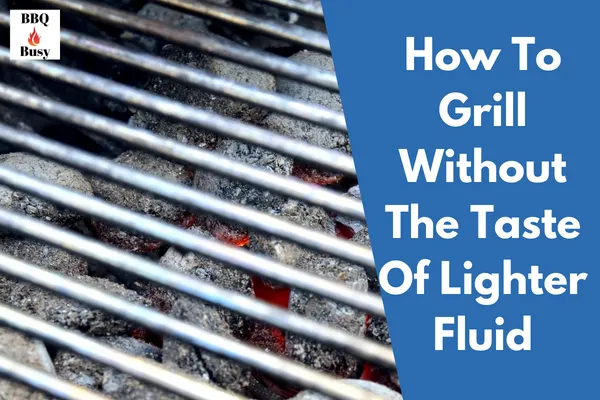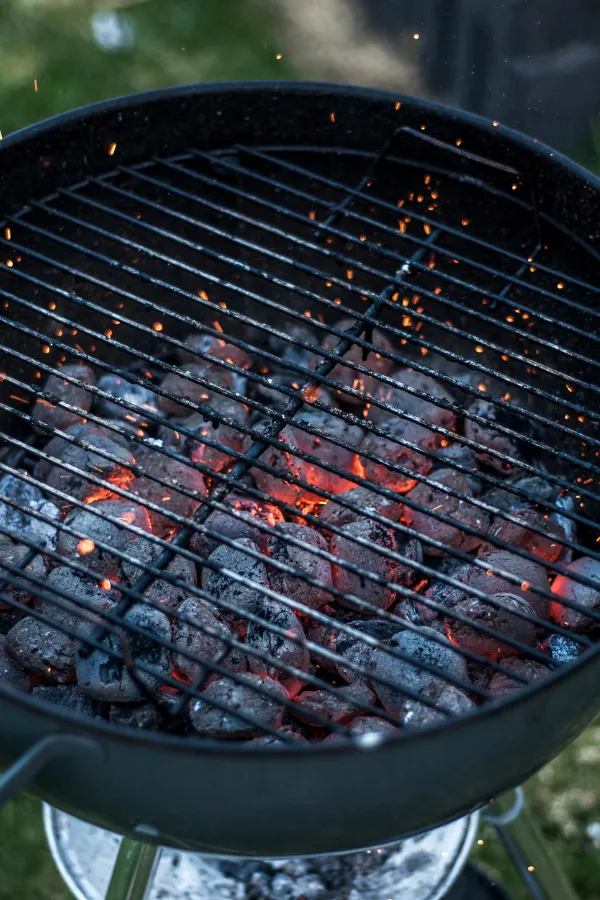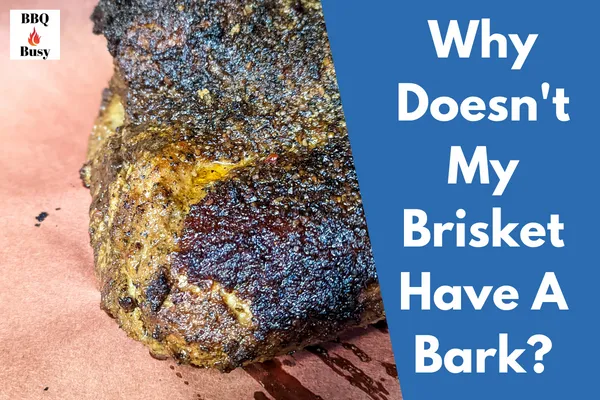
How To Grill Without The Taste Of Lighter Fluid
Grilling season is coming, and nothing quite beats a good BBQ. But what if you want to enjoy the smoky flavor of grilled food without using lighter fluid? It can be done! With some simple tricks, you’ll soon be able to cook up delicious meals without ever having to rely on that chemical-tasting liquid. Let’s take a look at how to grill without the taste of lighter fluid.
- How To Grill Without The Taste Of Lighter Fluid
- What Causes The Lighter Fluid Taste?
- Substitutes For Lighter Fluid
- Avoiding The Lighter Fluid Taste
- Do I Need Lighter Fluid For Charcoal Grill?
- Methods To Light Your Charcoal Grill The Right Way
- Using A Chimney Starter
- The Risks Of Using Lighter Fluid
- Frequently Asked Questions [FAQ]
- How To Grill Without The Taste Of Lighter Fluid: Conclusion
The traditional method of lighting charcoal with lighter fluid has been around for decades – but there are other ways! There’s no need to settle for an aftertaste when grilling your favorite foods; with these techniques, you can achieve great results while still savoring every bite. Whether you’re looking for something quick or more involved, we’ve got it covered.
By mastering the art of grilling sans lighter fluid, not only will you impress family and friends with your cooking prowess – you’ll also gain a sense of belonging among those who share in this knowledge. So grab your tongs and let’s get started!
What Causes The Lighter Fluid Taste?
When it comes to grilling, many people find themselves asking why their food tastes like lighter fluid. The answer is simple: the chemical taste of lighter fluid has been absorbed into the food. This occurs when lighter fluid is used during cooking, and as a result, the food absorbs these chemicals which impart an unpleasant taste. Furthermore, even after the flames have died down, residual fumes from the fuel can still linger in the air – tainting your food with that familiar pungent smell and flavor.
In order to prevent this problem from occurring, it’s important to avoid using any kind of lighter fluid while grilling. If you must use one, be sure to use a low-odor or odorless version so that your food won’t absorb those chemicals. Additionally, make sure all fumes have dissipated before adding any ingredients to the grill; otherwise they may pick up those same noxious aromas and flavors. By following these steps, you can ensure that your next grilled meal will not come out tasting like lighter fluid!
Substitutes For Lighter Fluid
Who needs lighter fluid when you have a plethora of options at your disposal? If it’s the taste of lighter fluid that bothers you, then there are plenty of alternatives to choose from. The simplest option is using a charcoal chimney starter. This tool uses newspaper and charcoal briquettes in order to start the fire without any added ingredients. Another great option is using a cooking oil or vegetable oil-soaked fire starter cube instead of traditional lighter fluid. Not only will this method help the coals light faster, but it also won’t impart any unpleasant flavors onto your food.
Avoiding The Lighter Fluid Taste
It is possible to grill without lighter fluid and still achieve a great-tasting meal. The key to avoiding the taste is lighting the charcoal without it. An electric starter is an easier option since all you have to do is plug in the electrical cord and wait for the coals to heat up; there’s no need to worry about creating smoke or odors from burning newspapers.
Alternatively, if using paper and matches, simply crumple up several pieces of newspaper into balls, place them on top of your charcoal pile, and then light them with a matchstick. This will help create enough heat for your charcoal to start glowing red hot – ready for grilling! After that, just add more coal as needed until you reach the desired temperature. Just remember not to overdo it with too much coal or else your food may end up tasting like ash instead of delicious grilled goodness!
When grilling without lighter fluid, make sure to give yourself extra time so that the coals are properly lit before cooking begins. If you rush this process, you won’t be able to get rid of any lingering tastes of lighter fluid which could potentially ruin your meal. Be patient and take things slow – in the end it will pay off with flavorful results every time!

Do I Need Lighter Fluid For Charcoal Grill?
Grilling without the taste of lighter fluid is possible, and it all starts with a charcoal chimney. A charcoal chimney allows you to light your charcoal quickly, easily and safely. The device consists of two cylinders, one inside the other. Place newspaper or dry kindling in the bottom cylinder and place charcoal briquettes on top. Once lit, the heat from the fire rises up through the inner tube and ignites the coals above; within minutes you can have hot, ready-to-cook coals for grilling. Utilizing a chimney starter will create an even flame that won’t overpower food with any chemical tastes or smells.
When using a charcoal grill no lighter fluid should be needed to start things off – just patience and practice!
Methods To Light Your Charcoal Grill The Right Way
The summer months bring with them a strong desire to fire up the grill. But, it’s not as easy as tossing some charcoal onto the bottom of the grill and lighting it up. To make your grilling experience taste better without lighter fluid, there are several methods you can use for properly lighting your charcoal grill:
- Using Charcoal Briquettes: This is the most common method used by those who don’t want their food to taste like lighter fluid. Place two pieces of newspaper crumpled into balls on the bottom of the grill and arrange briquettes so they form one layer across the entire base of the grill. Light each piece of paper in four different places and then close lid until coals turn grayish-white (usually 15 minutes).
- Charcoal Starter: If you need your charcoal lit quickly, this is an ideal option – just be sure to put it away from people or combustible items. Place starter over heat source such as gas stove burner or electric element and light; wait around 5 minutes before adding heated starter to prepped charcoal inside grill.
- Lump Charcoal: Those looking for a more natural flavor should consider using lump charcoal which contains no additives or chemicals that could affect grilled foods’ flavors. Start by placing lump charcoal directly over heat source, allowing about 3 minutes for heating before adding additional charcoal. Once added, cover with metal grate and wait until all lumps have turned white hot (about 10-15 minutes).
Your next barbecue will surely be enjoyable now that you know how to get started without having to worry about any unpleasant aftertastes!
Using A Chimney Starter
Arguably the best way of starting a charcoal bbq without resorting to lighter fluid is to use a chimney starter. A chimney starter looks like an inverted metal cylinder, usually made out of steel or aluminum and typically has two handles on either side for easy maneuvering. To use a chimney, fill the bottom portion with charcoal, and then place some kindling in the middle chamber which creates airflow through your charcoal when lit.
When you’re ready to light your grill, wait for the charcoal to turn grayish-white – this means that they are sufficiently hot enough to start cooking. Place the top of the chimney onto your grate and let it sit until all of the coals have turned white as well. Once everything is nice and hot remove the top part of your chimney and carefully pour your heated coals into your fire pit. Then get ready for delicious food without having to worry about those undesired tastes from lighter fluid!
The Risks Of Using Lighter Fluid
While lighter fluid is a convenient way to ignite the charcoal for grilling, it can also be dangerous. It is highly flammable and often has an unpleasant odor that might taint food with an unnatural taste. It’s important to use caution when handling this type of product as there is a potential risk of burns or fire if used incorrectly.
Paper towels soaked in vegetable oil are much safer than using lighter fluid and can be used to start the grill without any risk. To do so, simply place several paper towels on top of the briquettes and then drizzle cooking oil over them. This will stop any flare-ups that might have been caused by too much lighter fluid being used, while still allowing you to easily get your grill started. Once the coals have heated up enough, use metal tongs to spread them out into an even layer before adding wood chips and starting to cook.
By avoiding lighter fluid altogether, you won’t have to worry about getting a hint of its smell or taste in your food – plus you’ll know that no matter how much time you spend around the grill, you’re taking precautions against any risks associated with using products like this one.
Frequently Asked Questions [FAQ]
Is It Better To Use Lump Charcoal Or Briquettes?
Grilling is a great way to cook outdoors, but it can be tricky to get the perfect flavor. So which charcoal should you choose? Lump charcoal or briquettes? It’s important to consider what type of food you’re grilling and how long your cooking session will last when choosing between lump charcoal and briquettes. Lump charcoal burns hotter than briquettes, making it ideal for quick-cooking foods like steaks and burgers.
Briquettes are usually made from sawdust, coal dust, and other additives that make them light faster than lump charcoal and burn at a more consistent temperature over time. This makes them better suited for foods that require longer cooking times such as ribs or brisket. Whichever one you choose, both have their benefits if used correctly. Charcoal adds a unique smokiness to grilled food while also creating an easily controlled heat source. Just remember that whichever type you use, always let the coals burn down until they’re covered in white ash before adding any food onto the grate – this will ensure no lighter fluid taste lingers on your meal!
What Is The Recommended Temperature For Grilling?
It’s no secret that grilling is all about the temperature. Figuring out how hot to have your grill can be tricky, but with a few simple tips, you’ll get it down in no time. To hit the sweet spot for perfect grilled food every time, here are some key points to consider:
- Start by preheating your grill and make sure it reaches at least 450 degrees Fahrenheit.
- For more even heat distribution, keep an eye on any cold spots and adjust accordingly.
- Establish two levels of heat: one side should stay hotter than the other (around 500F) so you can move foods from direct high heat searing to indirect cooking if need be.
Grill masters know that getting the temp just right is half the battle when it comes to great tasting results. Too low or too hot and you could end up with either undercooked or charred meat – neither will win you any awards! A good rule of thumb is to take things slow; start off gentle then increase as needed until you find what works best for your particular setup.
That way, you won’t risk burning anything and can focus on achieving those mouthwatering flavors we all love from our barbecues. The trick is to experiment and use your intuition while paying attention to small details like flame height, smoke production and overall grill performance. Like they say, practice makes perfect – once you’ve got the hang of it, you’ll be able to effortlessly whip up delicious meals without breaking a sweat!
How To Grill Without The Taste Of Lighter Fluid: Conclusion
Grilling without the taste of lighter fluid is a task that many people think is impossible. But with proper preparation and knowledge, anyone can become an expert griller in no time! From selecting the right charcoal grill to marinating your food, there are several simple steps you can take to ensure a delicious meal every time. You’ll be amazed by how much flavor you can get out of each bite. No longer will you have to worry about any unwanted tastes or odors ruining your barbecue experience – all thanks to these easy tips and tricks. Grill on my friends – it’s going to be one unforgettable feast!




